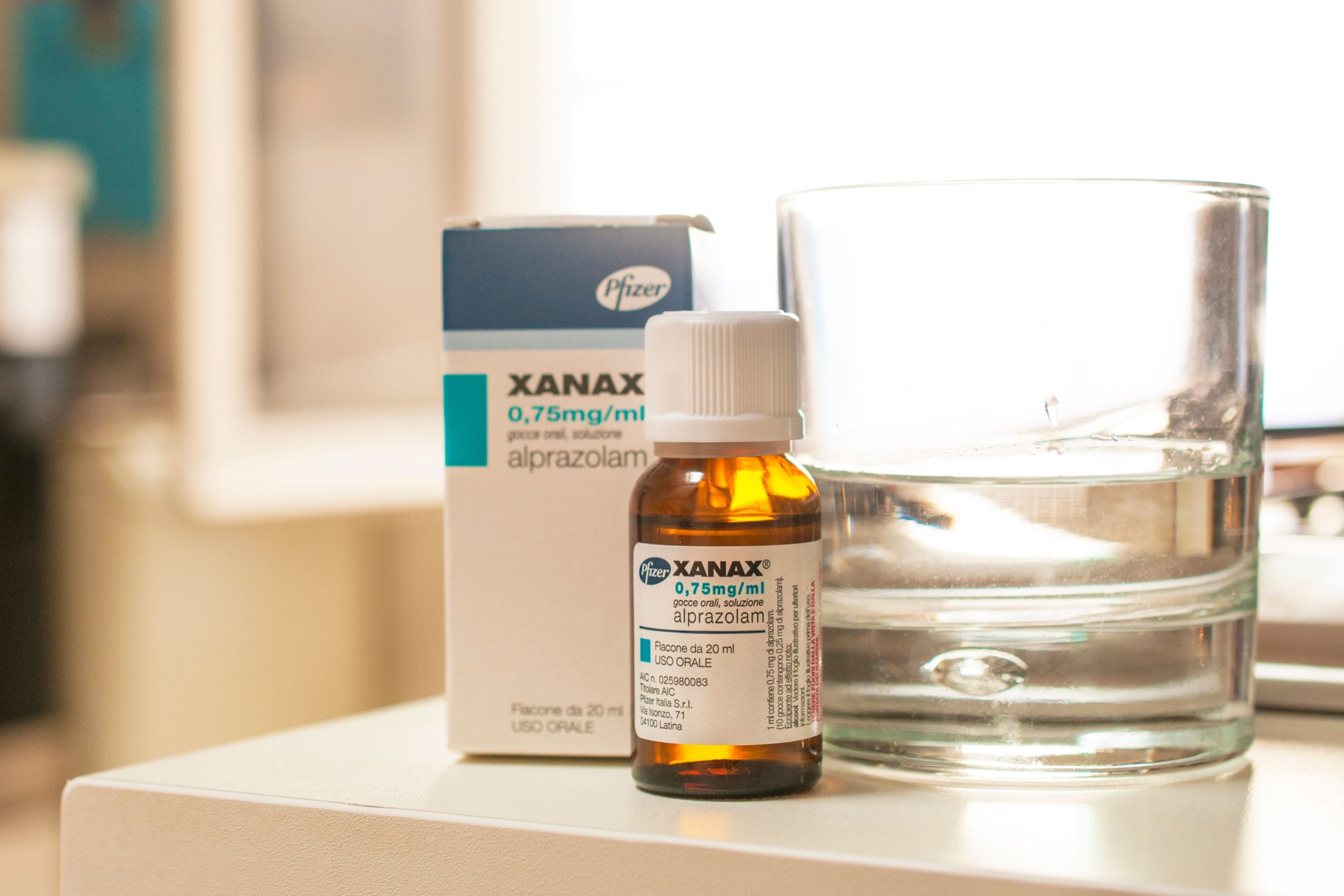When you or a loved one is struggling with Xanax addiction, it can be difficult even to admit you need help. Attempting to taper off the medication or stop using it entirely on your own often does not go well. The withdrawal symptoms of Xanax can be unpleasant and often leads you to relapse and return to your former Xanax misuse. Fortunately, you are not alone when you want help with your Xanax use disorder. Several viable options are available to you, including safely detoxing at home under medical supervision.
What Is Xanax?
Xanax is the brand name for Alprazolam, a prescription depressant medication used to treat anxiety and panic disorder. The drug is also prescribed for insomnia. It is classified as a Schedule IV controlled substance, meaning the only legal way to obtain it is with a prescription.
What Type of Drug is Xanax?
Xanax is a tpe of benzodiazepine or benzo. The drug causes the body to increase the production of GABA, a neurotransmitter. When GABA releases into the body, it causes a sense of calmness and relaxation.
As you can imagine, for someone misusing Xanax without a prescription, these effects can bring about a state of euphoria. Unfortunately, once someone experiences these sensations, they are more likely to continue to misuse Xanax.
How Addictive Is Xanax?
Besides increasing the production of GABA, Xanax also increases dopamine release. Dopamine is another neurotransmitter located in the pleasure centers of the brain. Elevated dopamine levels instill a “feel good” sensation that further enhances the drug’s effects.
Continued use of Xanax causes the brain to remember the sensations it experiences as a positive behavior. A side effect of this is the brain will start to crave the drug. As a result, the person misusing Xanax will want to experience the euphoric effects because they are rewarding and satisfying.
However, this leads to dependence on the medication. As dependence develops, the body also starts building a tolerance to Xanax’s effects. So even though the medicine is working as it should when prescribed, to the person taking it, it feels like it is not doing anything.
Sadly, this often causes people to start self-medicating and taking more than their prescribed dosage. For those who are misusing Xanax, they, too, will develop a tolerance to the drug the longer they take it and need to take more of it to achieve the pleasurable effects.
As such, the person ends up finding themself in a situation where the body continues to build tolerance every time they increase dosages. Ultimately, this can lead to an accidental overdose or death.
Withdrawal Symptoms of Xanax
Developing a dependence on Xanax can occur as quickly as three weeks, whether taken as prescribed or misused illegally. Furthermore, the longer one takes the drug, the more severe the withdrawal symptoms of Xanax.
Physical Withdrawal Symptoms of Xanax
- Headaches
- Weight loss from reduced appetite
- Insomnia
- Muscle aches, pains, and spasms
- Body aches
- Cramping and constipation
- Elevated blood pressure
- Seizures
- Uncontrolled sweating
- Nausea
- Dry mouth
- Blurred vision
- Vomiting
- Slurred speech
- Dizziness
- Lowered sex drive
Psychological Withdrawal Symptoms of Xanax
- Increased cravings
- Panic attacks
- Memory loss
- Hyperventilation
- Anxiety
- Hallucinations
- Depression
- Tingling sensations on the skin
- Contemplating self-harm
- Difficulties focusing and concentrating
- Hypersensitivity
Xanax Detox Timeline
The withdrawal symptoms of Xanax and the time needed for them to pass is directly related to the following factors:
- The duration Xanax was taken
- The dosage amount that was taken
- The frequency Xanax was taken
- Whether it was the only substance being misused
- How the drug was taken (orally, crushed and snorted, or dissolved and injected)
The Three Stages of Xanax Withdrawal
Stage 1: Early Withdrawal. This stage occurs within 24 hours of discontinuing Xanax. Initially, the symptoms could be as mild as a headache but will gradually become more apparent.
Stage 2: Acute Withdrawal. Stage 2 withdrawal beings about 48 hours to four days after the last dose of Xanax. The symptoms will continue to range from moderate to severe in intensity until they peak. The peak period occurs from around day five to two weeks after the last dose. After symptoms peak, they start to subside and vanish within another two to five days. However, for long-term Xanax use disorders, complete acute withdrawal could take a month or two before all symptoms go away.
Stage 3. Post-Acute Withdrawal Syndrome (PAWS) – Some people will experience PAWS that can last for several months or even years. PAWS is psychological and emotional withdrawal where cravings for Xanax can be triggered. However, with the proper treatment, PAWS too shall pass eventually.
Safely Detox from Xanax At-Home in Beverly Hills, CA
September is National Recovery Month. The safest and most effective way to stop using Xanax and avoid withdrawal symptoms is with medically supervised detox from MD Home Detox. We offer concierge-level customizable detox programs in Beverly Hills and the Los Angeles area. We will work with you to access the safest and most effective methods to help you overcome your Xanax addiction. After detox, we can refer you to our network of preferred professionals should you desire to continue the drug rehabilitation process. Contact us today.

